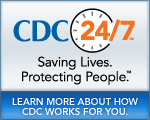MMWR
Morbidity and Mortality Weekly Report
MMWR News Synopsis for December 20, 2007
- Carbon Monoxidea€“Related Deaths a€” United States, 1999a€“2004
- Postpartum Care Visits a€” 11 States and New York City, 2004
- Evaluation of Positive Results from Occupational Tuberculin Skin Tests a€” Mississippi, 2006
There will be no MMWR telebriefing scheduled for:
December 20, 2007
Carbon Monoxidea€“Related Deaths a€” United States, 1999a€“2004
PRESS CONTACT: CDC
National Center for Environmental Health
Office of Communications
(404) 498–0070
The need for the expansion of public education and the establishment of a national surveillance system is needed to prevent deaths associated with carbon monoxide (CO) poisoning. From 1999-2004, an average of 439 people have died annually from unintentional, non-fire-related carbon monoxide (CO) poisoning in the United States. Increasing public education regarding the dangers of CO poisoning, especially during the winter heating season, may help in preventing deaths attributed to accidental CO exposure. The development of a national surveillance system that is dedicated to monitoring carbon monoxide-related health outcomes could also help in targeting public health prevention efforts and reduce the morbidity and mortality related to carbon monoxide poisoning.
Postpartum Care Visits a€” 11 States and New York City, 2004
PRESS CONTACT: CDC
National Center for Chronic Disease Prevention and Health Promotion
Office of Communications
(770) 488–5131
To help reach all population subgroups, the importance of the PPCV should be communicated to all women at the time of delivery and/or hospitalization discharge. American Academy of Pediatrics and the American College of Obstetricians and Gynecologists recommend that women who give birth have a postpartum care visit (PPCV) 4 to 6 weeks after delivery. This new study found that the overall prevalence of women having had a post-partum clinic visit (PPCV), 4-6 weeks after delivery, was 89 percent in population-based data analyzed in 11 states and New York City that participate in the Pregnancy Risk Assessment Monitoring System. The study also found that PPCV prevalence rates were significantly lower in certain population subgroups. Among women who had eight years or less of education the prevalence of PPCV was about 71 percent and for women with no prenatal care the prevalence of PPCV was 66 percent. PPCVs provide important opportunities to assess the physical and psychosocial well-being of the mother, counsel her on infant care and family planning, and detect and give appropriate referrals for pre-existing or developing chronic conditions such as diabetes, hypertension, or obesity.
Evaluation of Positive Results from Occupational Tuberculin Skin Tests a€” Mississippi, 2006
PRESS CONTACT:
CDC
Division of Media Relations
(404) 639–3286
The decision to conduct tuberculosis testing should be based on actual risk of infection, and testing, if performed, should be conducted following established CDC guidelines. A 2006 investigation, conducted by investigators from the National Institute for Occupational Safety and Health, found that false positive tuberculosis test results among a group of nine Mississippi firefighters were likely caused by errors in test interpretation. These results highlight the importance of conducting tuberculosis testing only when medically indicated and following Centers for Disease Control and Prevention guidelines to avoid errors that might result in unnecessary worry, medical evaluation and follow-up.
####
- Historical Document: December 20, 2007
- Content source: Office of Enterprise Communication
- Notice: Links to non-governmental sites do not necessarily represent the views of the CDC.
View Press Releases in
Get e-mail updates
To receive e-mail updates about this page, enter your
e-mail address:
Contact Us:
- Centers for Disease Control and Prevention
1600 Clifton Rd
Atlanta, GA 30333 - 800-CDC-INFO
(800-232-4636)
TTY: (888) 232-6348 - Contact CDC-INFO


